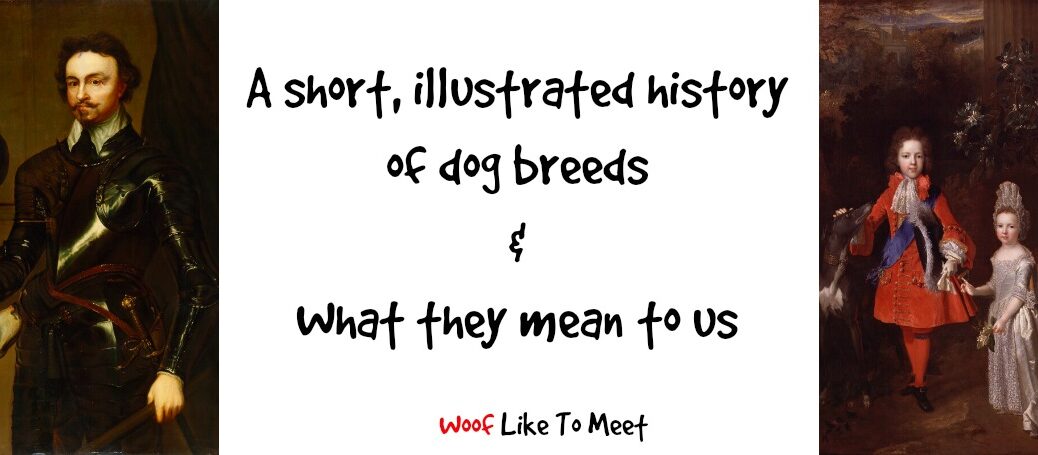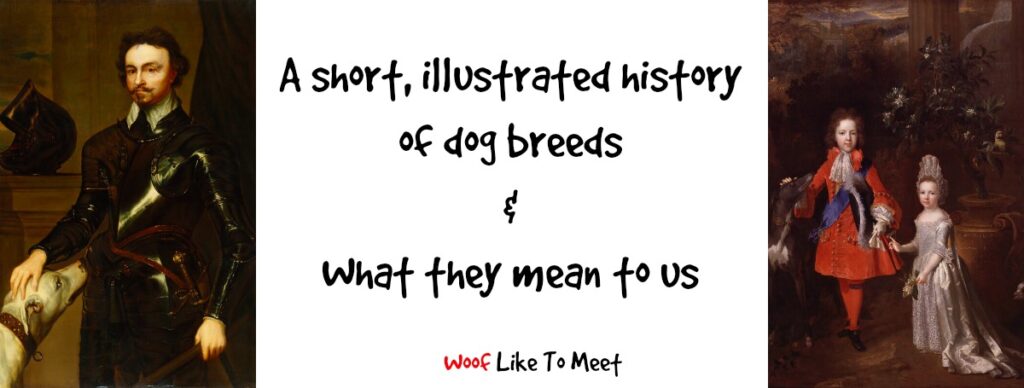
In the last post, I was exploring some different ways to see the dog population in general and how that affects how society views and treats them. All of this was in my bid to understand why people acquire a dog from a shelter rather than from a breeder.
I mean, let’s face it… when we want a dog, we have two choices: a brand new baby one, or an adult one from somewhere else.
If we live in developed, post-industrial countries and we want a brand new baby one, we can choose one that comes with a dog breed or we can choose that doesn’t.
The same if we’re getting an adult one.
I want to dissect that choice we’ve got and really get to grips with the thinking underneath it – a binary thinking often so part of our culture that we don’t stop to question it.
Let’s talk about that word “pedigree” first. I’m not going to use it myself because it has notions of class and being “pure” or somehow better than a “mutt” or a “mongrel”. If anything, I like the slightly cute “Heinz 57” to describe dogs who don’t conform to a type, but that is arse-backwards because so-called pedigrees came out of the Heinz dogs, not the other way around. It’s like saying “mixed race”. Well, they’re just not. It’s not a definition for a dog that looks like this:
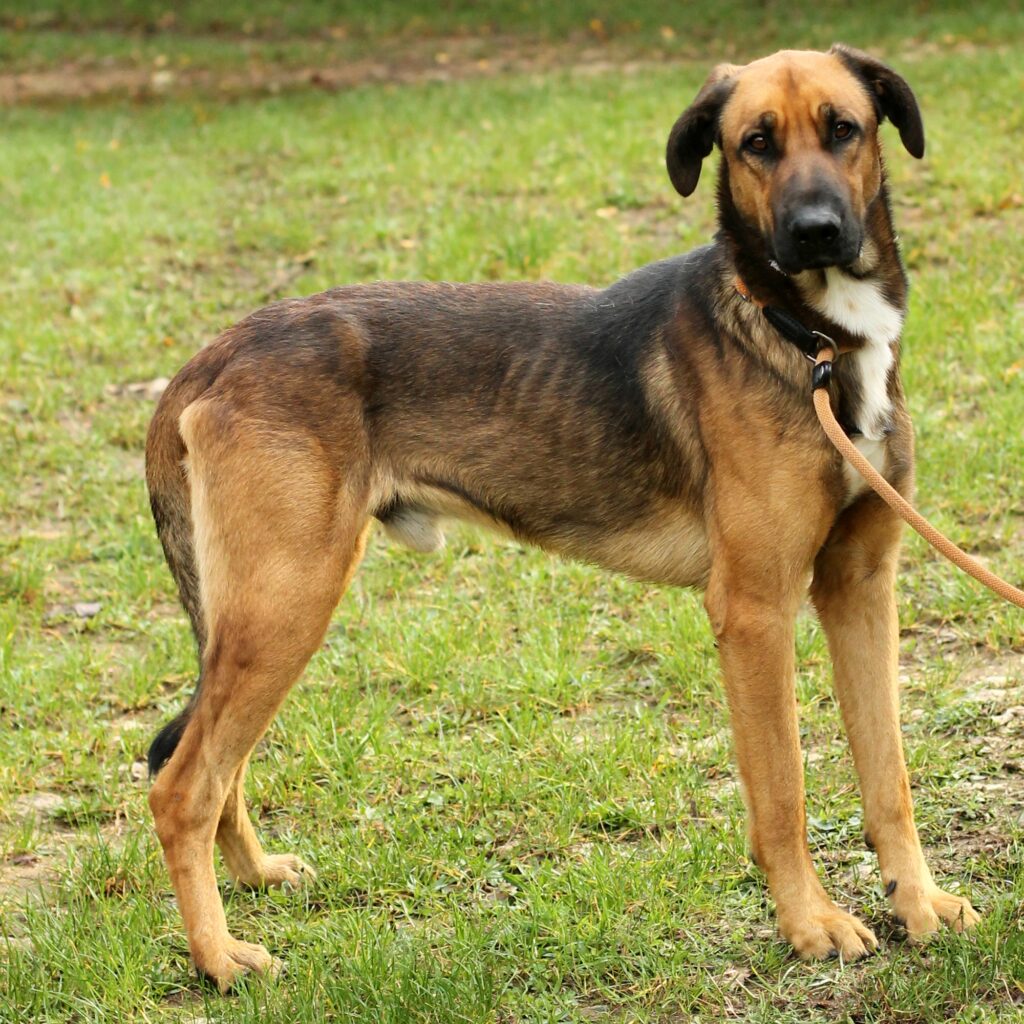
It’s not like we had 400 different breeds of dog and “mutts” came out of them. We had mutts. Some were good at jobs. We specialised for jobs, like terriers and lapdogs and sighthounds and shepherds and livestock guardians. And breeds came out of them.
Mutt is such an ugly word anyway. Merriam Webster’s first definition is “a stupid person”. You can see why I’m not okay with this, even if it is an American definition.
They’re not “mongrels” either. Merriam Webster says: “being offspring produced by parents of different races, breeds, species, or genera” – well, “mongrel dogs” existed way before different breeds.
I could go “woke” and call them “unique”, but they’re as unique as every other dog on the planet (or other animal). I don’t think we’re at the point where we can reclaim these words either, as various other pejorative terms have been.
I have real trouble finding a non-judgemental word to describe the huge population of dogs who don’t have a type. So I’m just going to call them “dogs” and I’ll add a word to help you know when I mean a dog who isn’t. I might have said “unknown heritage” but I say that knowing you may well know their heritage. All those words are troublesome and are a result, no doubt, of some quite ugly 19th century social trends that I’m not so comfortable with. We need better words. Most cats do not have this problem and nobody cares apart from a few cat fanciers.
I’m using “type” here to mean dogs who look like a breed, without any pedigree papers. Dogs who did jobs, largely. I will use “breed” for any of those 400 (more?) types of dog who require you to have a list of their grandparents, and who in all likelihood, you probably need to pay for. I will not call them inbred mutants or pure-bred as both of those are imbued with meaning I don’t want to convey. I don’t want you to finish reading here, though, and think I’m anti-breed. It’s far more nuanced than a simple “pro” or “con”. Besides, having had two true pedigree dogs, two “type” dogs who were pedigree in all but evidence and four dogs who had no such claim to a name, you can see how complex it is for me. That said, in France, we don’t tend to get so many that don’t have some breed genes in there, simply because of the balance of dogs of no clear breed vs breed dogs.
Most likely, our first specialisations happened thousands of years ago, dividing dogs into hunting dogs and guarding dogs. Those guarding dogs may well have even helped domesticate humans. How mad is that? Civilisation as we know it, that sedentary city-building, crop-growing species we’ve become, might only have been possible with guardian breeds to help us domesticate other species which then meant we could stop moving around so much. Madness. Nobody knows for sure how or why humans domesticated dogs, whether dogs domesticated themselves or whether they actually domesticated us, and no one theory is better than any other. But those ancient guardian dogs who now give us Aidis, Akbash, Carpathians, Kangals and Kuchis may well have been among the oldest “types”. But essentially, long ago, they were all just dogs.
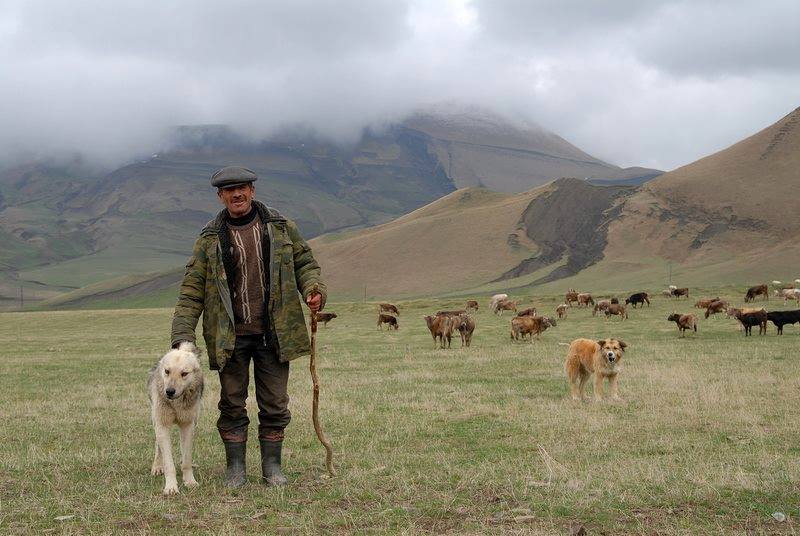
What I love about archaeological dog stuff is that even really great archaeologists mostly only know proto-dog bones from young wolf bones because they were buried near humans. Dogs have long since meant something to us.
Their first use as a status symbol was probably not unlike having a very good spear or axe: it conferred elevated status upon you because your dogs helped you be better than other people at stuff. Your dog’s progeny (and maybe yours too) became meaningful because you were better at that stuff. If you had more sheep alive at the end of the year because you had five particularly good guardian dogs, both your economic and social status would improve as a result.
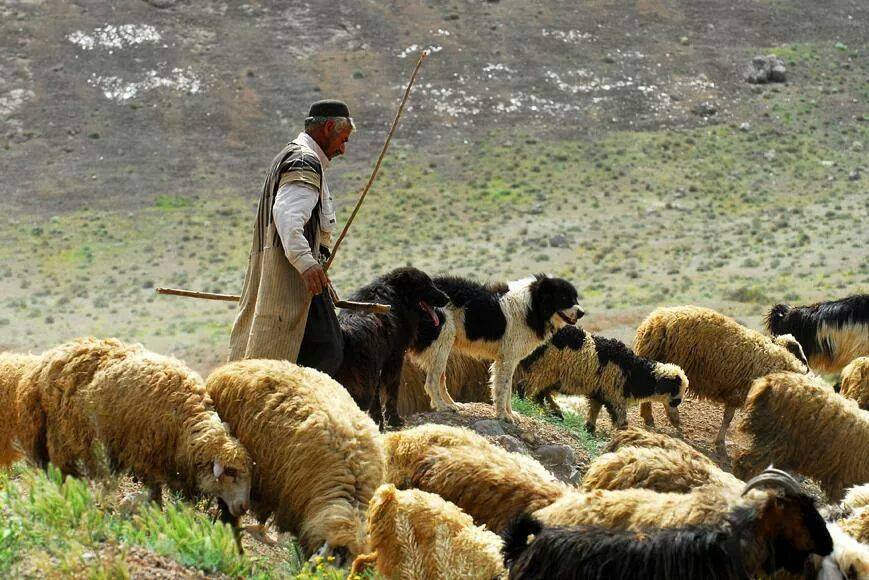
The Egyptians, Greeks and Romans all had their role in shaping the destiny of the dog, not least dogs of war, house guardians, hunters and shepherds. Varro gives us quite a lot of description in his Rerum rusticarum libri tres. I’m sure when he was talking about shepherd dogs, though, he meant livestock guardians rather than herding dogs – a specialism that probably came later.
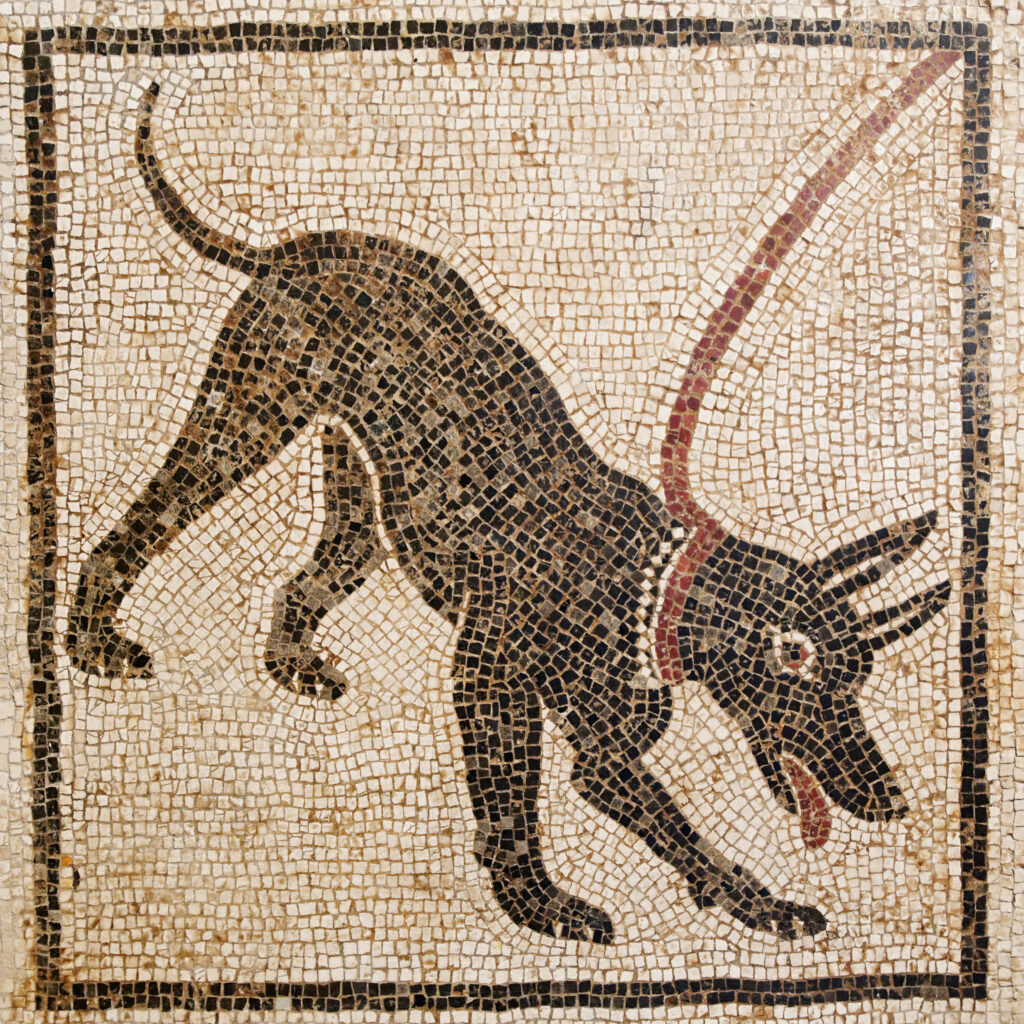
From those early days, we specialised and specialised. In the UK (and henceforth affecting its New World colonies who continued some habits but not others as a kind of double-fingered salute to their erstwhile Imperial overlords) dog ownership was based on exclusivity: you had to have a certain amount of cash in the 11th century if you wanted to own a dog. Hounds became associated with the aristocracy, particularly greyhounds. Although in other parts of Europe, greyhounds were banned altogether as unsportsmanlike, so good were they at their job. Thus, the galgo, podenco and various other Iberian sighthounds continue to be used to work in those countries, compared to others like France and Germany who thought it was just bloody unfair. Sporting dogs implied money and leisure-time. Poaching dogs implied criminality.
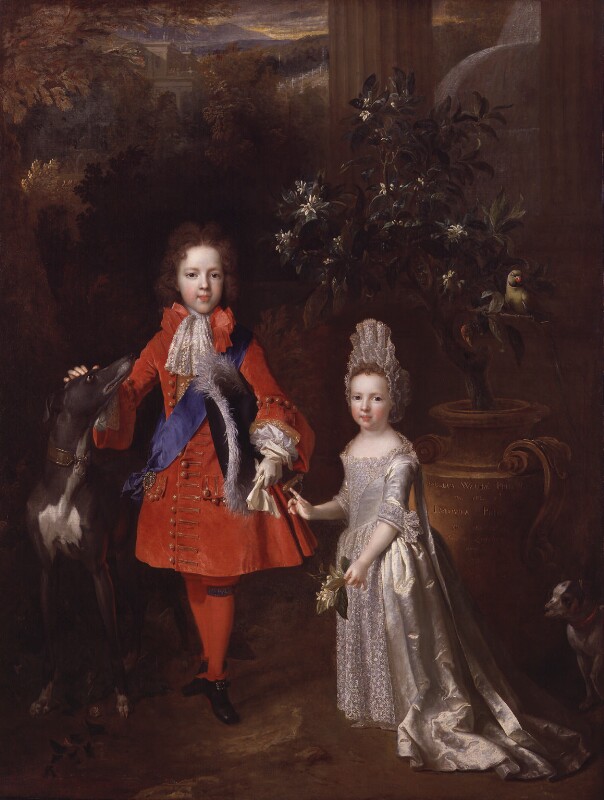
by Nicolas de Largillière 1695
Don’t know about you, but I see two rich kids and their greyhound just kicking back, and some kind of general dog on the right in the shadows. There’s a metaphor for you.
In the homes of the aristocracy, a lady might keep a ‘small popie’ (I just love that phrase… a small ladys popie) as a lapdog. Laps only exist if you get to sit down, so that tells you a lot about that. By the way, some men gave them to their wives as a chastity belt alarm… were the small popie to be put down and left so that you could engage in a little “how’s your father”, well they were supposed to yap to let everyone know.
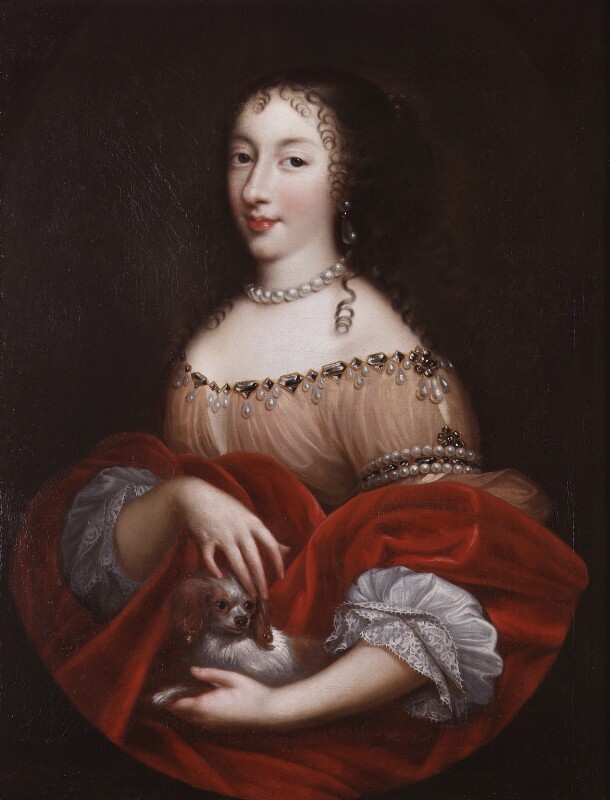
I mean, that looks like a small ladys popie to me. I don’t know about you. You can see he is ready to bite anyone who looks like he might want to get up to a bit of hanky-panky with his small lady.
Nothing so much as a genealogy for any of those dogs, though.
Shakespeare tells us a lot about dogs, as does John Caius with his De Canibus Britannicis written in 1570 about all kinds of dogs. Collies make an appearance, not as a breed, of course, but as a type. Greyhounds, bloodhounds, harriers, spaniels, setters, shepherds, water dogs, mastiffs, and all manner of other dogs make it into his book, including a number of others such as the Tumbler (who tricked rabbits into capture) and spaniels known as Comforters, a name I like very much. His final category is about “Curres of the mungrell and rascall sort”, which shows how deep-seated our negative views about dogs go. “Mingled with sundry sortes”, responsible for their own reproductive choices, including perhaps with bears and foxes according to the author, Caius didn’t have a particularly positive view of them. He may well have founded a college in Cambridge, but biology hadn’t quite hit its stride yet, clearly. Breedist prejudice, yes. Biology, no.
Written genealogies start on both sides of the channel in the 17th century as the Agrarian Revolution takes interest in improving livestock quality across the farming world. Aristocratic hounds were the first to get their genealogies, but plenty of other domesticated animals kept them company.
I mean, this seventeenth century dog does not look unlike a Brittany spaniel. Mabelle at our shelter is almost the spitting image.
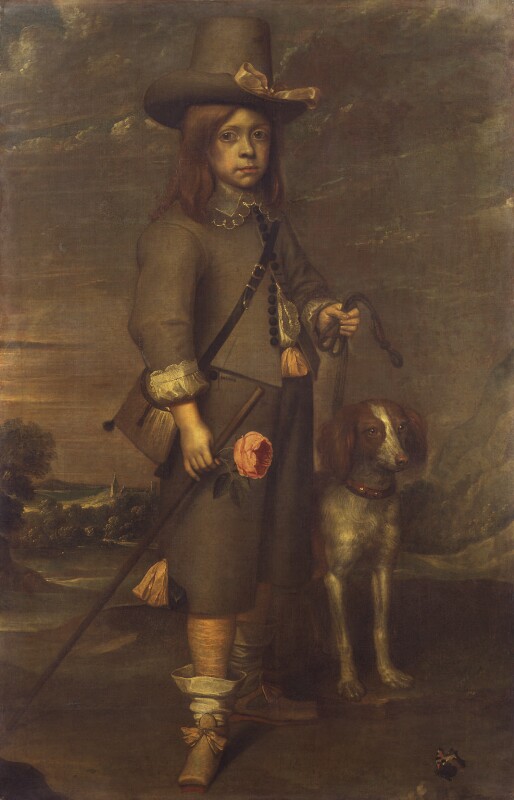
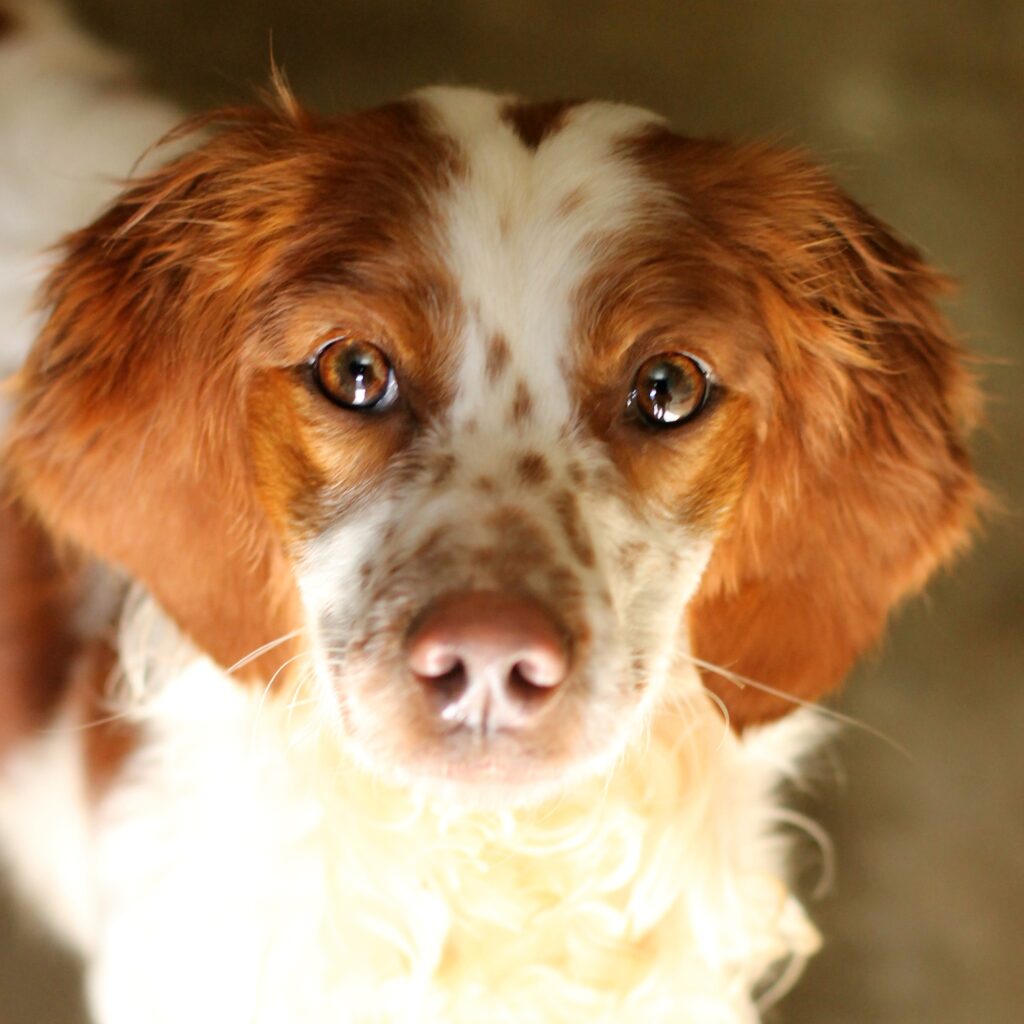
Right down to the freckles, the dudley nose, the ginger ears and eye patches, the central white band, the amber eyes…
But there were spanielly looking dogs right in there with greyhound looking dogs in art as early as the fourteenth century. There’s a Mabelle right underneath the horse if I’m not mistaken.
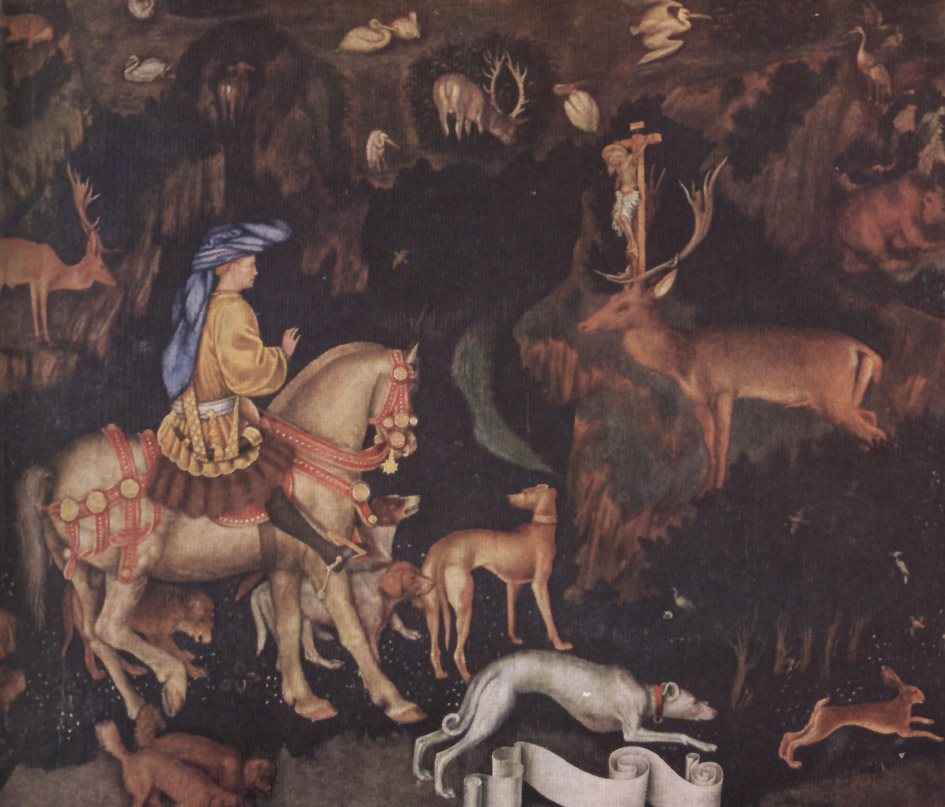
As revolutions took place and the Enlightenment spread across Europe and its New World colonies – or its former ones – dog ownership rules relaxed and the nouveaux riches and the new bourgeoisie took up dog keeping too. Leisure time became an actual thing through the Industrial Revolution, and gundog breeds in particular started to find a place for the aspiring gentleman. Indoors, the small ladys popie became a middle-class pastime of its own: hobby breeding. To be fair, hobby breeding and “fancying” other animals from pigeons to rabbits was also hugely popular with blokes too. What else are you going to do with a little time on your hands? Leisure time, time itself and weekends were practically invented in the Victorian Age and when you have time and leisure and weekends, why not start hen fancying in your spare time?
It tied in with other ideas too: the “improvement” of the race. “Pure” bloodlines didn’t just affect domesticated animals, as eugenicists found a society ripe for their ideas. Kennel clubs, “pedigrees” and the likes find their founding dates at such times all over the globe. Line-breeding and in-breeding, closed stud books and other bleak forms of artificial selection all found a home in the 19th century. Now anyone could have a dog, well, let’s bloody well interfere with nature as much as we can.
To be honest, though, if you spend an hour or two drifting through the National Portrait Gallery’s “pet dog” section, all the landed gentry seem to have far more indiscriminate dogs of unknown heritage far, far more than they have anything we’d know as a “breed”. Class, as many writers point out, was largely an invention of the middle classes. Dogs in paintings were a symbol of a different sort: loyalty and blind adoration.
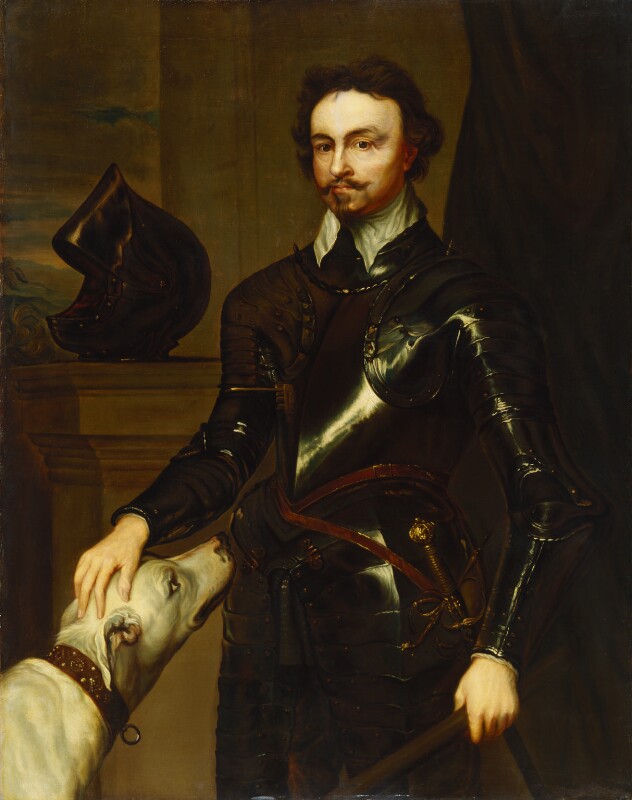
As you see here, I’m pretty sure this isn’t a dog that has survived as a “breed” and the aristocratic Earl of Strafford didn’t seem to care much about that, as long as the dog was looking at him with blind devotion. For me, I don’t think it was particularly the toffs who cared about breeds, and for many countries with early kennel clubs, they were republics filled with the nouveaux riches, where their own human pedigree was not a barrier to success. Ironic indeed that the Americans and French in their republican spirit of égalité should have become quite so fixated on what breeds said about them. The humble dog-of-no-known-type would have been a much better symbol if you ask me.
Who had what dogs really became a huge thing in the Victorian times. Bull baiting, badger baiting, ratting and betting were the province of either the criminal underclass or the working man. I hear talk of bull terriers of various nationalities being Nanny dogs, which is largely nonsense. I mean there’s an awful lot of mythologising goes on about pedigree dog breeds. That’s especially from fairly knowledgeable dog people who should know better. I even saw a French behaviourist I respect very much classing huskies and pharoah dogs as ‘ancient breeds’. The pharoah dog’s myths are pretty evident on their wikipedia page: ‘From DNA analysis based solely on the genes of the Gray Wolf, a recent theory arose that the breed may have been recreated in more recent times from combinations of other breeds. However, popular belief holds that this breed is descended from the Tesem, one of the ancient Egyptian hunting dogs based on the similarities between the breed and well documented images of dogs and descriptive writings found on the walls of ancient Egyptian tombs.’
Mythologising at work.
Still, a lot of what went into a breed MAY have had a long working history. I think that’s why, even in show lines, you get very stereotypical behaviours.
The trouble starts when dog breeds are appropriated by one group or another.
Take the German Shepherd for instance. Lots of mythologising about that breed, for sure. I’ve had experts in the field who may even work their dogs telling me about how the GSD worked 200 years ago. Ahhhh.
But as we see in the 20th century, sometimes the GSD has been appropriated as the symbol of white supremacy, not least in Nazi Germany where ‘pure’ blood wasn’t just for humans, and the GSD served as a perfect metaphor for strong German blood, but also in South Africa and Zimbabwe later as a symbol of white oppression of black majorities. Blondi’s appropriation by Hitler is just one symbol of how human cultures can use a dog breed in a rather ugly way. Even where they were not used by the police, they were often used by white landowners to protect their land.
The Rhodesian Ridgeback has a similarly ugly use: originally an African landrace dog used for hunting, it still carries the name of a colonial past and its genes reveal a closeness to Great Danes brought in by Europeans, then appropriated by white landowners. The boerboel has a similar heritage, bred for one purpose: to protect the homestead.
If you thought that the delightful hybrid wolf-dog escaped such ugly connections, a symbol of freedom, the call of the wild, think again. Wolf-hybrids were bred specifically in South Africa to track insurgents. Huskies, Malamutes, Saarloos, Czech Wolf Dogs and so on may have that rugged look that says you love hiking in mountains, but their purchase by dog trainers who use heavily aversive training methods says that Man’s Desire to Master Nature is not quite dead yet either.
It’s not all about white male supremacy, I promise. But it doesn’t get much prettier.
I’m from the working class north, a land of flat caps, whippets, miners and pies. Does anything say Working Class North better than pigeon fancying and a whippet?
Dog fighting and bull or bear baiting have mostly died a death, largely due to middle-class outrage (if you want to read some nice analysis of this, check out Hal Herzog and Jessica Pierce) but the dogs associated with them still find themselves appropriated by what Stuart Harding calls hypermasculinised disenfranchised young men. Pit bulls, staffies, bull terriers and the likes have a long history of association with men operating on the fringes of society. Bill Sikes in Oliver Twist may be well-known for his English Bull Terrier Bullseye, although Dickens referred to his dog as a “white shaggy dog” and no mention is made of a terrier at all. Breaking the stereotype about owners of bull breeds is one of the biggest battles shelters face on behalf of dogs who are 99% exactly the same as other dogs and who don’t care about stereotypes and your human prejudices thank you very much.
Dogs have a long history of being appropriated to represent race, gender, status, class, nationality and much more. Does anything say white working class English bloke like an English Bulldog? Does anything say, as Ricky Gervais brings up in his snippet in Humanity, elderly homosexual other than a miniature poodle? Does anything say middle-class white suburban girl like an English cocker spaniel of non-working lines?
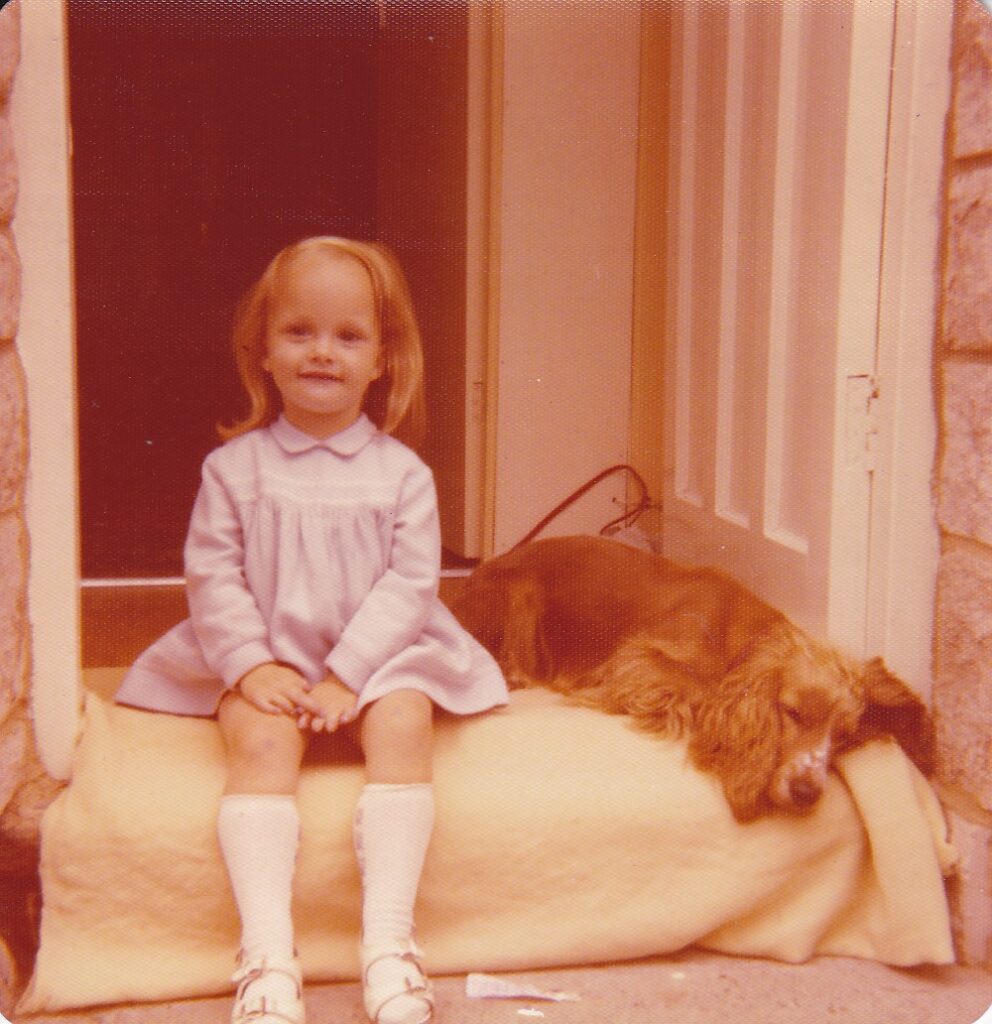
Last time I was at the hairdresser’s, I know a rare occurrence, i picked up some Home Style kind of magazines to remind myself how other people live. Nothing but cavachons, maltipoos, labradoodles and dachshunds mentioned in the biographies of those mud-free, hair-free homes. Not a real mutt among them, and I flicked through at least five magazines.
You may laugh or may be offended, but these stereotypes affect dogs every day. I did have the man who wanted me to add ‘cross’ on a pedigree poodle’s paperwork, so afraid of the ribbing people would give him if he picked up a poodle at the shelter. How many people walk around a shelter smiling and turning up their nose at a bull breed or dog of unknown provenance?
If you want to join the world of agility and really succeed, are you getting a Jack Russell or an Aussie shepherd or a collie? Are you even allowed to go to an agility meeting if you don’t have a ponytail and lady bits? I joke, of course, and you’ll no doubt find me 50 examples of men doing agility with their dobies, but I did watch an awful lot of videos of agility trials before I allowed myself to make that statement. Yes, there were men and there were ladies without ponytails and without collies or Aussie shepherds. But I didn’t need to keep a tally.
And if you fancy a little mondioring, French ring, schutzhund or the likes, are you doing it with a spaniel? Are you male or female? Let’s be honest, it’s a sport dominated by people with penises with a penchant for a buzzcut and a doberman, shepherd or rottweiler. I see a few young women with ponytails who like camouflage far more than is normal, and then the odd non-camouflage woman who breaks the mould, perhaps just to show that she can. I love those obstinate creatures like myself who refuse to be bound by stereotypes and at least force me to question them.
The connection between race, gender, age, class, status, place, pastime, nationality and so much more is so deeply part of what we think about dogs that it can be impossible sometimes to step back and ask questions of our choices.
For those of us who work in shelters, in rescue or in breed-specific rehoming, we fight these stereotypes every day on behalf of less popular types or breeds. We currently have four German Shepherds, five Malinois, two Beauceron, eight American staffordshires, two cane corso, six German Shorthaired Pointers, two breton spaniels and a whole number of breeds who are not popular for one reason or another. You can imagine the scrap when a bichon lands, however.
And for our so-called mixed-race dogs, who may very well be a product of two or three predominant breeds, or a happy mélange of nothing in particular, what do THEY say about the people who adopt them? That was mostly what I wanted to know when I started my studies. Are they nothing more than a badge of honour that says how very virtuous we are?
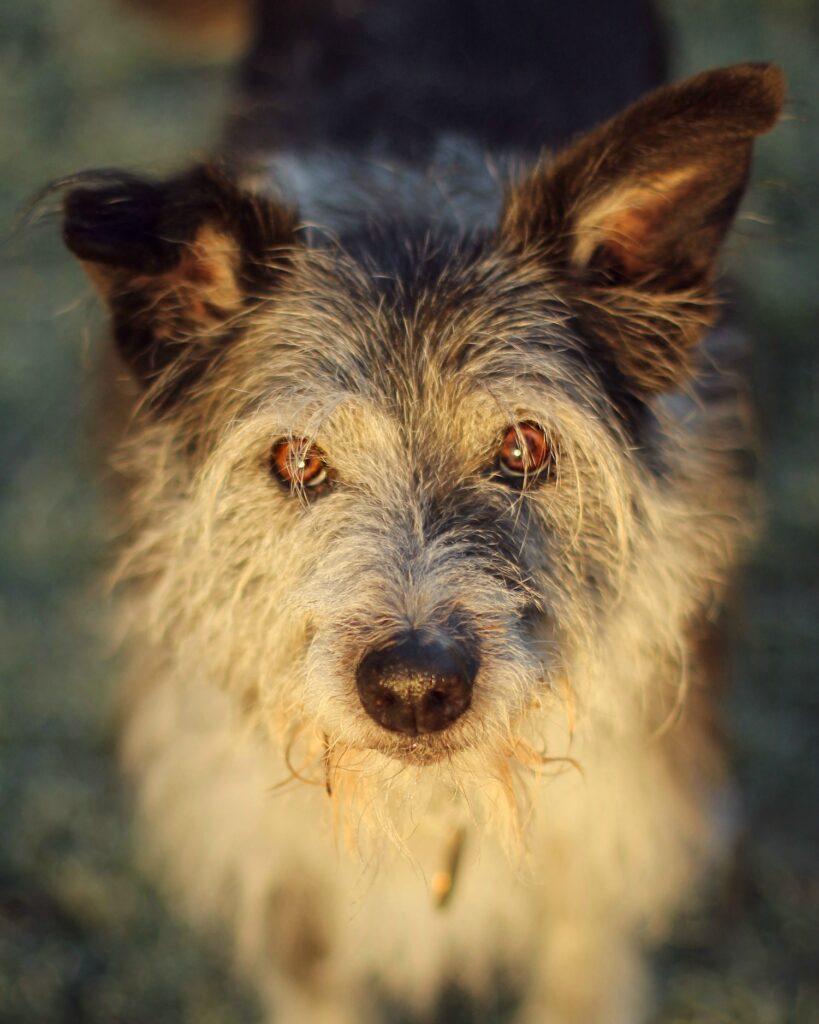
That, however, is a topic for another post entirely!
If you want to know more, you’ll find these books really interesting:
Coppinger, R. and Coppinger, L. (2016) What is a dog?
Derr, M. (2011) How the dog became the dog
Mills, D. and Westgarth, C. (2016) Dog bites: a multidisciplinary approach
Miklosi, M. (2015) Dog behaviour, evolution and cognition
Ritvo, H. (1987) The Animal Estate: The English and other creatures in the Victorian age

